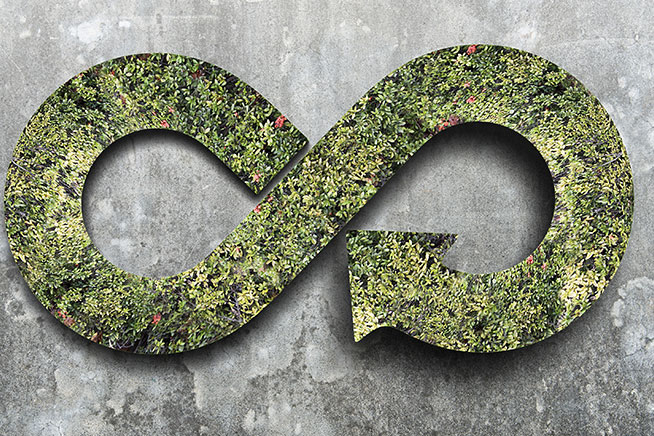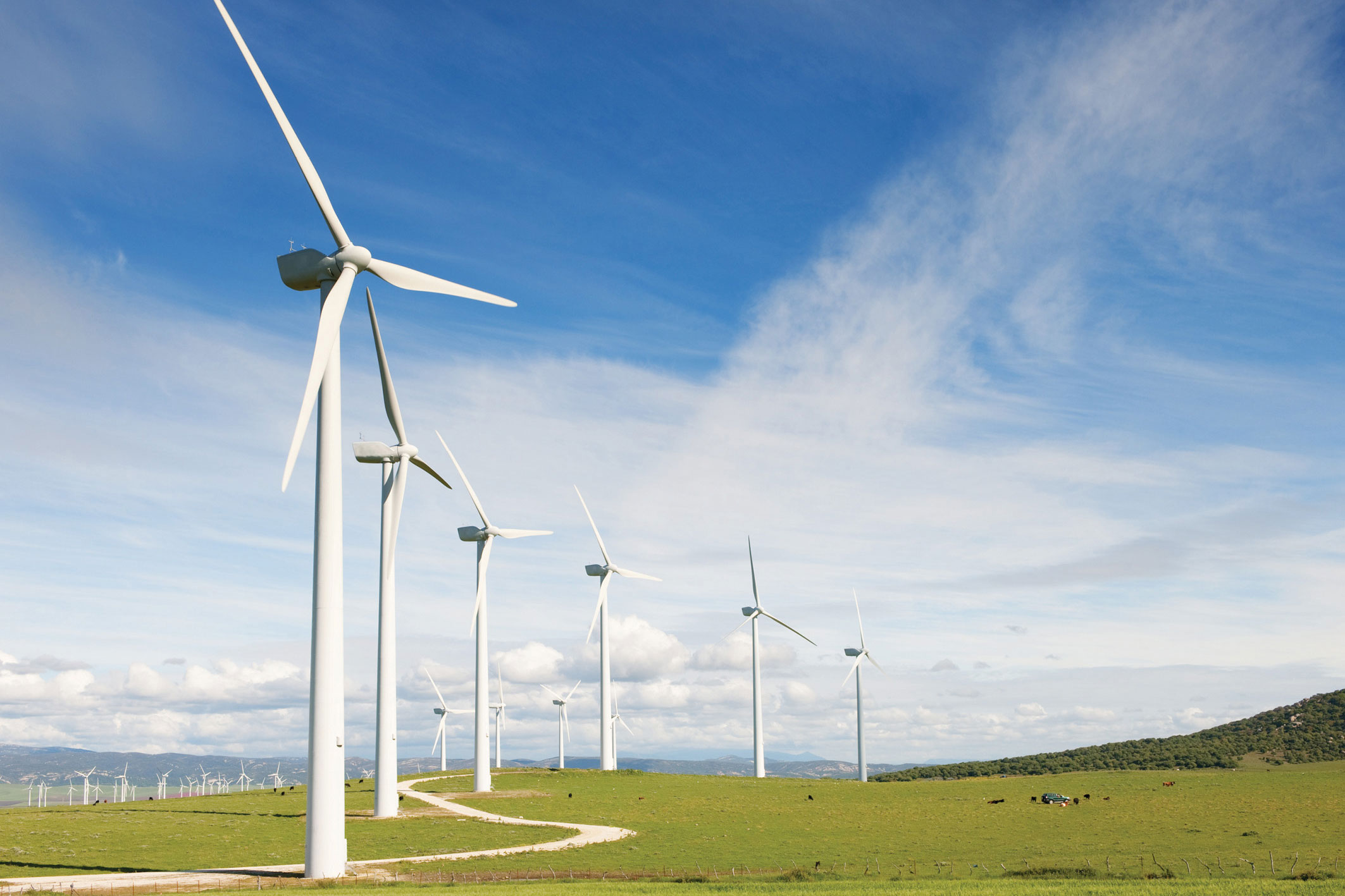The pressing need for climate action is undeniable. We are all now familiar with the negative effects of climate change. It causes changes in temperature, wild swings in weather, and impacts human health and biodiversity worldwide. Thankfully many individuals, groups, and companies are committed to doing something about it, and Covestro is proud to be part of those efforts.
As head of Sustainability and Government Affairs at Covestro, I talk to people across many disciplines—from labs to manufacturing facilities to logistics operations and more—about these issues. In my interactions I’ve noticed something curious. Most people view climate change negatively, which is perfectly reasonable. But many of these same people also often look at climate change solutions negatively, too. Their attitude seems to be that, while humanity must make these changes, they will come at the expense of innovation, the bottom line, or both.
A New, More Sustainable Economy
The truth is, thinking of conservation efforts as a negative financial driver or foul-tasting medicine that must be choked down to save ourselves is entirely outmoded. In fact, the challenges we are addressing as we confront climate change will be the very things that drive innovation, growth, and prosperity going forward. Doing nothing about climate change is unthinkable.
But, as we act, it’s important to remember that the options we are pioneering for mitigating it are what will fuel a new, more sustainable economy that drives everyone—businesses, people, and the planet—forward: improving GDP, creating jobs, enhancing well-being, strengthening society, and preserving our environment.
It’s also clear that if we want the world’s largest manufacturers (and the consumers who buy from them) to see sustainability as a comprehensively positive force, we must make sustainable solutions not just possible, not just the right thing to do, but a desirable and preferred way of doing business. At Covestro we firmly believe sustainability is not only a great thing for the planet but also a great thing for our bottom line. That is why we have been working steadily over the last 20 years to find ways to use our strengths to benefit our customers, our consumers, and the planet. Here’s how we get there.
One Person’s Trash
Excessive waste is the unfortunate byproduct of a consumer culture that grew during a time when the world did not understand the perils of overconsumption. Through a combination of market forces, design trends, and consumer demand, an “extract, use, discard” cycle became the dominant mode of manufacturing and consumption. Consequently our landfills are full of cheaply made, poorly designed products. Today a third of the earth’s municipal waste is not disposed of properly and only 8.6% is recycled. Worse yet, 45% of greenhouse gas emissions are generated from the production of everyday goods.
While we find ourselves at the tail end of a myopic set of decisions, today we know better. It’s time the world rethinks how we can reuse or remake used products for new manufacturing and develop a truly circular economy built for the future. I’m proud to say Covestro is on the forefront of the technologies that will make it happen as we continue to execute against our corporate vision of full circularity.
Designing a Better Future
Improving the design of plastic products the world uses will go a long way to making sure less plastic ends up in the trash and more plastic returns to our production lines. Designing products that have a longer lifespan with greater repairability is a great first step. Beyond that, designing products from the start to be recyclable at the end of life will have a massive positive effect. The less new fossil materials we need to use to make plastic the better, and recycling has a direct and positive effect on that.
An Industry That’s Reinventing Itself
Please don’t mistake what I’m saying for a rosy picture of things just over the horizon. There are significant changes afoot today in the plastics industry that are already changing the way we do business. The two main ways our industry has been able to move the needle are in changing the kind of energy we consume and changing the sources for our raw materials. I’m happy to say both areas are moving robustly toward favoring renewable sources. Many of our manufacturing facilities around the world are in the process of transitioning to run on a significant percentage of wind and solar power, but as a scientist, what really gets me excited are the breakthroughs happening on the raw material front.
Biomass will be Massive

Alternative raw materials. Biomass, CO2, used materials, and waste can replace fossil resources. Image courtesy of Covestro
Covestro has been on the forefront of new research into using plant biomass to extract organic chemicals like acids, esters, alcohols, and phenols from sources including sugar cane, corn, straw, and wood. This research has led to breakthroughs in the ability to transform biomass into aniline—one of the main precursors for insulating foam. This, in turn, is instrumental in the construction of energy-efficient buildings through products like polyiso board and spray foam insulations, as well as helping refrigerators and other appliances make better use of the power they consume.
Harvesting the Air
Carbon dioxide in the atmosphere is thought to be one of the leading causes of climate change. What if we could simultaneously reduce the levels of carbon dioxide in the atmosphere while using the captured carbon in it to replace fossil sources? It might sound like a fairytale, but our scientists helping to realize it.
Carbon dioxide, captured at the point when it is generated, represents a massive unused store of raw materials, and we are now unlocking the secrets of how to process it into feedstock.
Net-Zero Emission Plastics
What do you get when you recycle more plastic, make full use of biomass, utilize captured carbon as feedstock, and process it all using renewable electricity? You get plastics with net-zero emissions. A recent peer-reviewed paper in Science showed that net-zero emission plastics coming out of the circular economy are not only possible, but their operational costs are in the same range as linear-economy, fossil-based production. The authors estimate this process would not only reduce pollution and waste but could save as much as $288 billion. They also point out that all of this will only be possible if large-scale recycling is incentivized and investment in the technologies around renewable carbon feedstock remains high.
How We’re Helping
At Covestro we believe in the circular economy as a driver of innovation and prosperity, and this belief continues to deeply inform our investments in next-level green technology for the plastics industry. We have forged alliances all along the value chain, from raw material suppliers to technology developers to our customers. We’ve also cleaned up our own operation, moving to more renewable energy sources. We are using research to push the boundaries into chemical recycling, which, while still in its infancy, could have massive repercussions for recycling plastics on a massive scale.
We know the biggest commitment we can make is stepping up and living this change every day. We have set an ambitious goal to become fully climate-neutral with net-zero emissions by 2035. We’ll achieve this aim by cutting greenhouse gas emissions from our own production and purchasing green energy from our suppliers. While we will be investing up to $650 million in these efforts between now and 2030, we expect this investment will rebound to our financial benefit. By the same point we expect to realize up to $100 million in savings through increased energy efficiency, and once these methods and techniques are in place, the savings will be multiplied into the future.
Good Track Record
Of course, it’s one thing to say these things and another to accomplish them. That’s why I’m so proud of our efforts so far. Our goal for 2025 was to reduce our greenhouse gas emissions by 50% compared with our emissions in 2005. We exceeded this goal in 2021 with a reduction of 54%, a full four years ahead of schedule. We hope to achieve a similar pace with our new climate neutrality goals. Along the way, we plan to reduce nitrous oxide emissions, make greater use of innovative catalyst technology, and use the latest data analysis and digitization tools to control and analyze our production processes to realize new efficiencies. Perhaps most significantly in terms of making sure we achieve the results we are aiming for, in 2021 Covestro began tying long-term executive compensation to key performance indicators around sustainability, making sure that our decision-makers are fully incentivized to realize these goals.
Many of our products have climate-neutral versions today, and the goal is to have a climate-neutral version of every single product in the near future. We were the first company to make a climate-neutral polycarbonate, which will be instrumental in the construction of EV chargers as the electric vehicle revolution moves into full swing. Additionally, we have recently developed climate neutral MDI and TDI, essential building blocks for both rigid and flexible polyurethane foam used in many key industries. It all adds up to millions of metric tons of carbon that is kept out of the atmosphere and in our products.
Join us on the road to a cleaner, brighter future—one where we protect the climate, nature, and our natural resources, all while stimulating new ways of value creation. Saving the planet is not incompatible with innovation. In fact, it’s an essential part of it.


